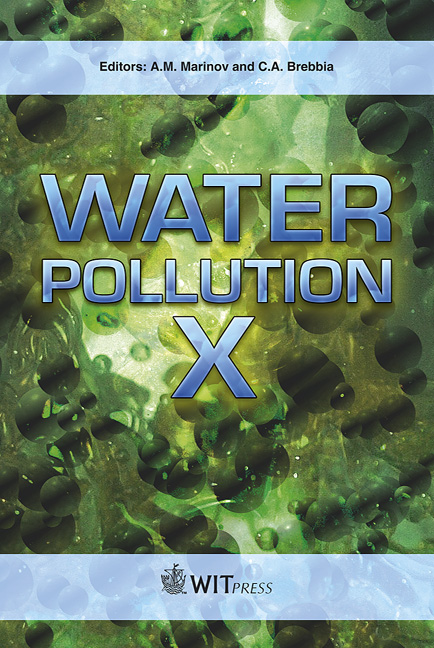Removal Of Volatile Organic Compounds From Soil
Price
Free (open access)
Transaction
Volume
135
Pages
10
Page Range
107 - 116
Published
2010
Size
576 kb
Paper DOI
10.2495/WP100101
Copyright
WIT Press
Author(s)
R. S. Amano
Abstract
Pollution by petroleum products is a source of volatile organic compounds in soil. Therefore, laboratory column venting experiments were completed in order to investigate the removal of a pure compound (toluene) and a mixture of two (toluene and n-heptane) and five (toluene, n-heptane, ethylbenzene, m-xylene and p-xylene) compounds. The choice of the compounds, as well as their proportion in the mixture, was made on the basis of the real fuel composition. The objective of this study is a comparison between the experimental volatile organic compounds removal results and the computational fluid dynamics (CFDs) analysis. The proposed model for the contaminants transport describes the removal of organic compounds from soil, the contaminants being distributed among four phases: vapor, nonaqueous liquid phase, aqueous and \“solid”; the local phase’s equilibrium and the ideal behavior of all four phases was found to be accurate enough to describe the interphase mass transfer. The process developed in the lab consists of a heater/boiler that pumps and circulates hot oil through a pipeline that is enclosed in a larger-diameter pipe. This extraction pipe is vertically installed within the contaminated soil up to a certain depth and is welded at the bottom and capped at the top. The number of heat source pipes and extraction wells depends on the type of soil, the type of pollutants, and the moisture content of the soil and the size of the area to be cleaned. The heat source heats the soil, which is transported in the interior part of the soil by means of conduction and convection. This heating of the soil results in vaporization of the gases, which are then driven out of the soil by the extraction well. The extraction well consists of the blower, which sucks the vaporized gases out of the system. Our previous studies have removed higher boiling compounds, such as naphthalene, etc., to a non-detectable level. Thus, the current technology is very promising for removing most of the chemical compounds; and can also remove these high boiling compounds from the saturated zone. The reasonable
Keywords
soil remediation, vapor extraction, volatile organic compound removal





